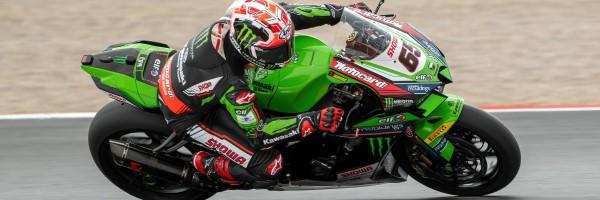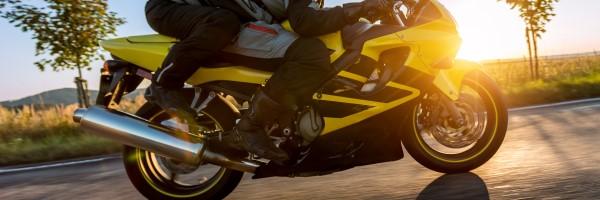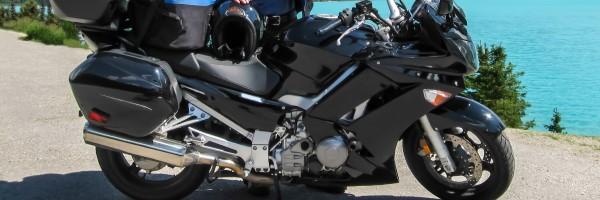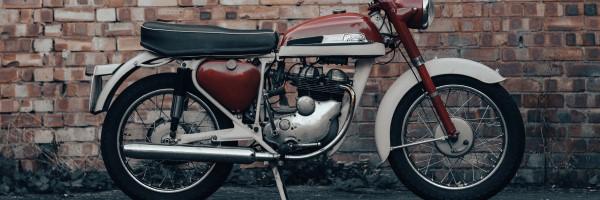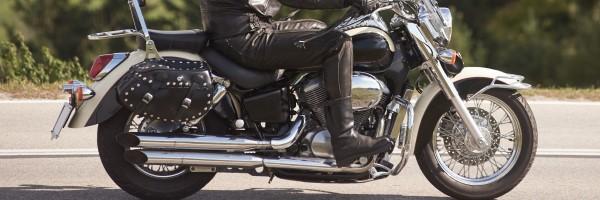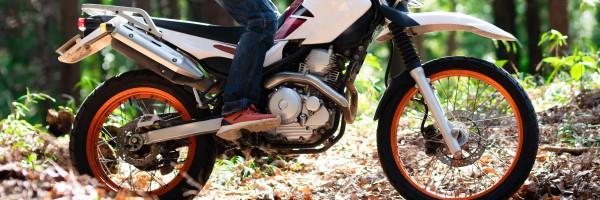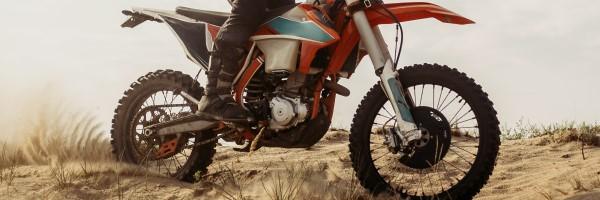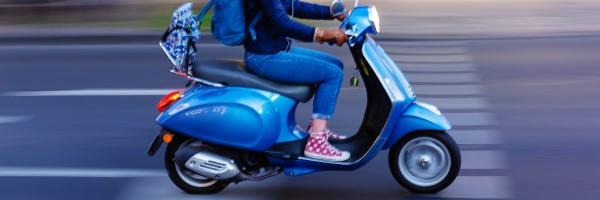

Motorcycle & Scooter Tyres
We offer over 3,000 Motorcycle and Scooter tyres in every category from cruising to racing. We offer all popular tyre brands including Michelin, Bridgestone, Pirelli, Maxxis, Mitas & many more. Order online for fast courier delivery direct to your door. We do not currently offer fitting.
Use or tyre finder below or click on sub category to start your search. You will need to know your current tyre size along with its load and speed rating. Ensure you match or exceed your current tyres rating. If you require any assistance our friendly team are available by phone, email or live chat to answer any questions you may have.
MOTORCYCLE TYRE BRANDS
MOTORCYCLE & SCOOTER TYREs FAQs
RACE & TRACK DAY
Designed for the sole purpose of getting you over the line before all others. The main goal for these tyres is to provide as much grip and lean angle to the rider as possible. This is especially important for these tyres to maintain the correct temperature when riding in demanding conditions as this will make the tyre grip more predictable and offer greater confidence in the corners. Often referred to 'racing slicks' given Race and Track Day tyres have little to no tread. Many brands also make rain variation of their Race and Track Day tyres designed to maximise the amount of water dispersed, creating a larger contact patch between track and tyre. View our range of Race and Track Day Tyres
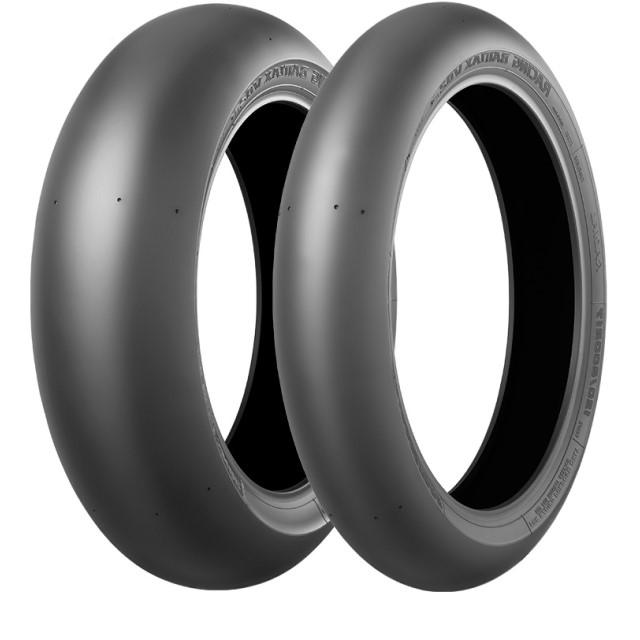
SPORTS
Sport tyres are a step down from track tyres as they are designed with speed in mind but also with use on public roads leading to less extreme designs as their track counterparts. Sport tyres are often made with some track usage in mind so require the same mechanics as a Track tyre in order to corner quickly and provide a high level of grip. The primary difference between Race and Track Day tyre and Sports tyres is the greater focus on roads and wet weather riding. This is achieved by implementing different tread patterns. View our range of Sports Tyres.
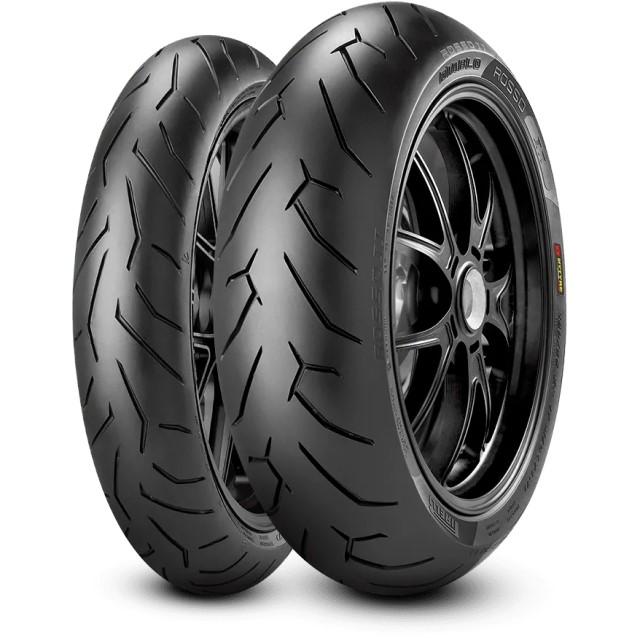
SPORT TOURING
Sport Touring Motorbike tyres still encourage a faster riding style but are designed with longer journeys in mind. Often the ergonomics of the bike will reflect this with a more comfortable/upright seating position. Many Sport Touring bikes have a storage capacity to assist with longer rides. In order to deal with the higher horsepower of Sport Touring bikes, tyres often implement 'sports' characteristics in order to allow faster cornering and featuring dual compound constructions. View our range of Sport Touring Tyres.
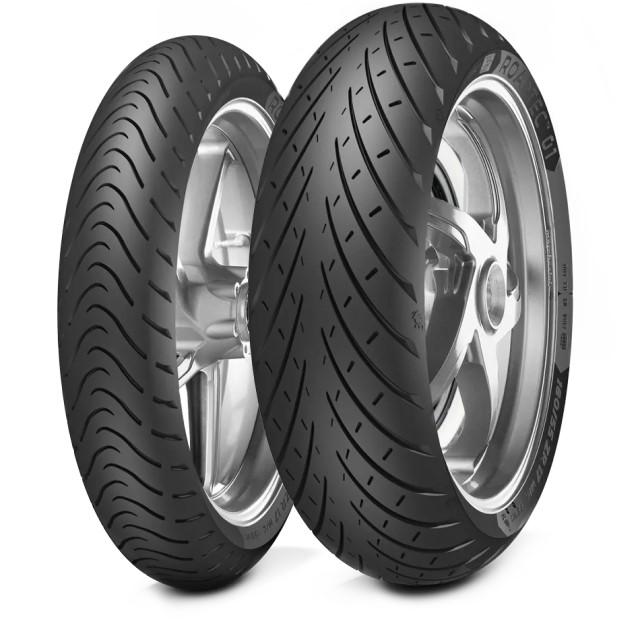
CLASSIC & COMMUTER
Classic motorcycle tyres apply collectively to tyres for bikes from older generations. The characteristics can vary from construction, pattern and compound. Due to being produced for older style bikes, some Classic sizes can be niche and apply to specific motorcycle models.
Commuter tyres are similar in characteristics to Sport Touring tyres with designs aimed at many straight miles for exclusive use on paved roads and highways. Commuter bikes are typically between 125cc and 500cc and have smaller tyres than their larger Sport Touring equivalents. View our range of Classic and Commuter Tyres.
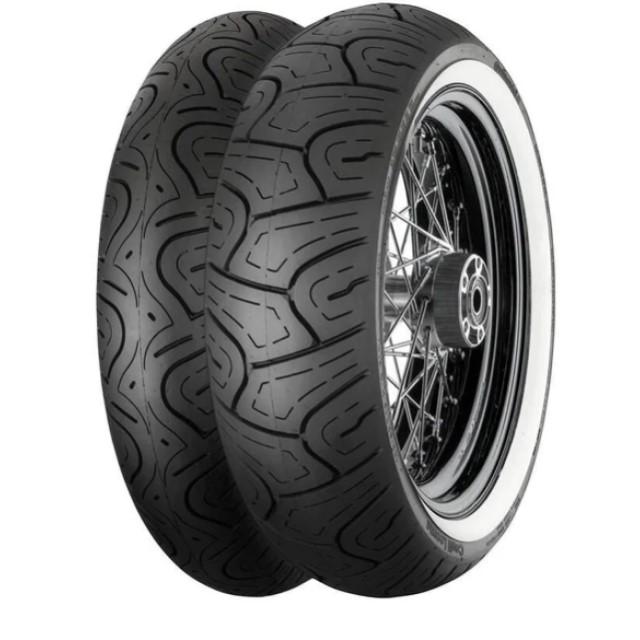
CUSTOM & CRUISER
Custom and Cruiser motorbike tyres tend to focus on wear resistance given Custom and Cruiser bikes are heavier and do a lot of straight miles. Custom and Cruiser tyres can be characterised by their hard-wearing compounds and rounded shoulders. Due to this design philosophy, many Custom and Cruiser tyres sacrifice cornering grip, dissuading an aggressive riding style. View our range of Custom and Cruiser Tyres.
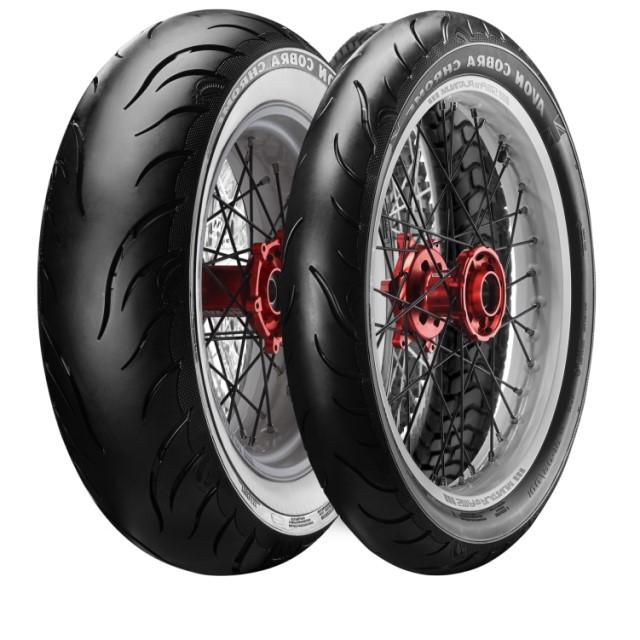
ADVENTURE & TRAIL
Adventure and Trail motorbike tyres are designed to be used on and off road with a tread pattern to suit both conditions. A block pattern is a common style of Adventure and Trail tyre. Brands often display what percentage use the specific pattern is designed for in order to influence suitability for the desired application. View our range of Adventure & Trail Tyres.
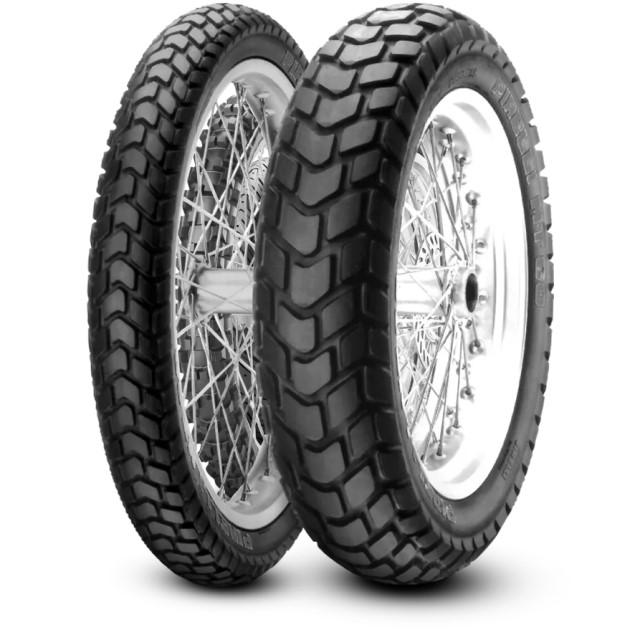
MOTOCROSS & OFF ROAD
Motocross and Off-Road motorbike tyres are designed for two main types of bikes: Motocross and Enduro. Motocross and Off-Road tyres are built for purpose, not comfort, and are able to tackle sharper turns and geared to faster acceleration. Some Motocross and Off-Road tyres are not road legal and marked 'NHS'. There is a wide variety of compounds are available for these tyres depending the desired terrain with Hard, Medium/Intermediate and Hard. View our range of Motocross and Off-road Tyres.
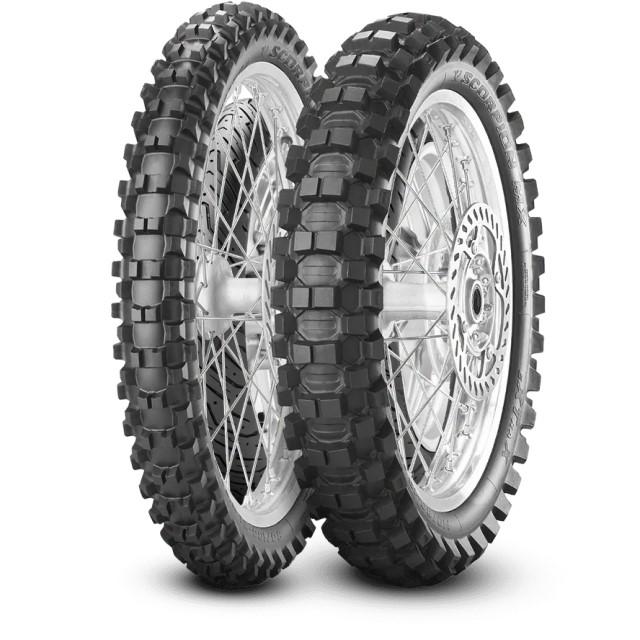
SCOOTER
Scooter tyres are small, road focused patterns designed for commuter scooters in urban environments. Scooter tyres are made by all popular brands and come in a wide variety of sizes. View our range of Scooter Tyres.
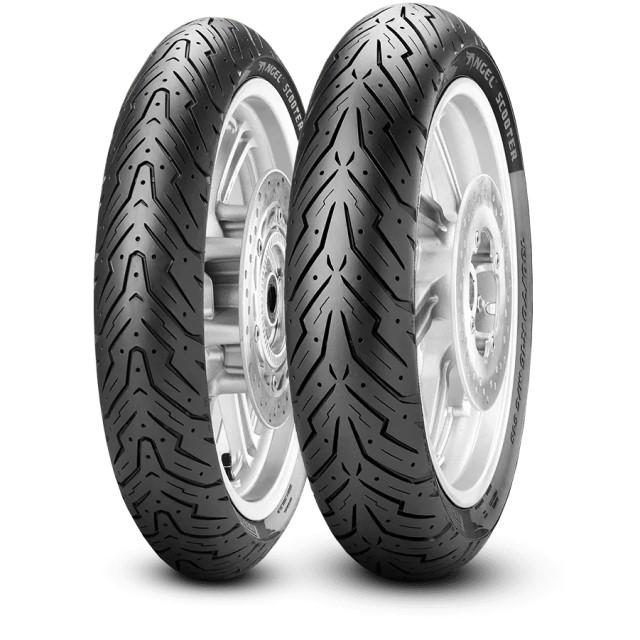
Motorcycle tyres are available in three different construction types: Crossply, Bias Belted and Radial.
CROSSPLY: Crossply is the older construction method but is still commonly used on agricultural, industrial and construction machinery, including Motorcycle. Crossply tyres are usually cheaper than their Radial or Bias Belted counterparts, and the stiff sidewalls offer better protection against damage. Crossply is a common construction for Motocross, classic and Scooter tyres.
BIAS BELTED: Bias-Belted is a method of tyre construction where an additional tyre ply, typically made of steer or corded material, is added to the top layer to offer additional support to the tyre. Bias-Belted provides a smoother ride and rolling resistance. Bias-Belted tyres are common construction on larger Custom and Cruiser tyres.
RADIAL: Radial is the modern construction method used in a huge number of applications. Almost all road-going vehicles will use radial tyres, as well as modern Motorcycle and Scooter tyres. Radial tyres are more flexible giving better protection on the tread area and allowing for travel at high speeds. Radial is a common construction for Sport Touring, Sports and Track and Race Day tyres.
A motorcycle tyre's speed index is the maximum safe speed of the tyre represented by a letter from the very slow (B) to the very fast (Y and beyond). The Load Index is the maximum weight that the tyre can safely support and is represented by a number, where the higher this number is the more weight the tyre can carry. It is imperative for the safety of the vehicle and its occupants that tyres with high enough speed and load Indexes are chosen. Check the Load and Speed ratings of your current tyres before ordering replacements. The table below show what each load and speed index number/letter relates to in KG and MPH.
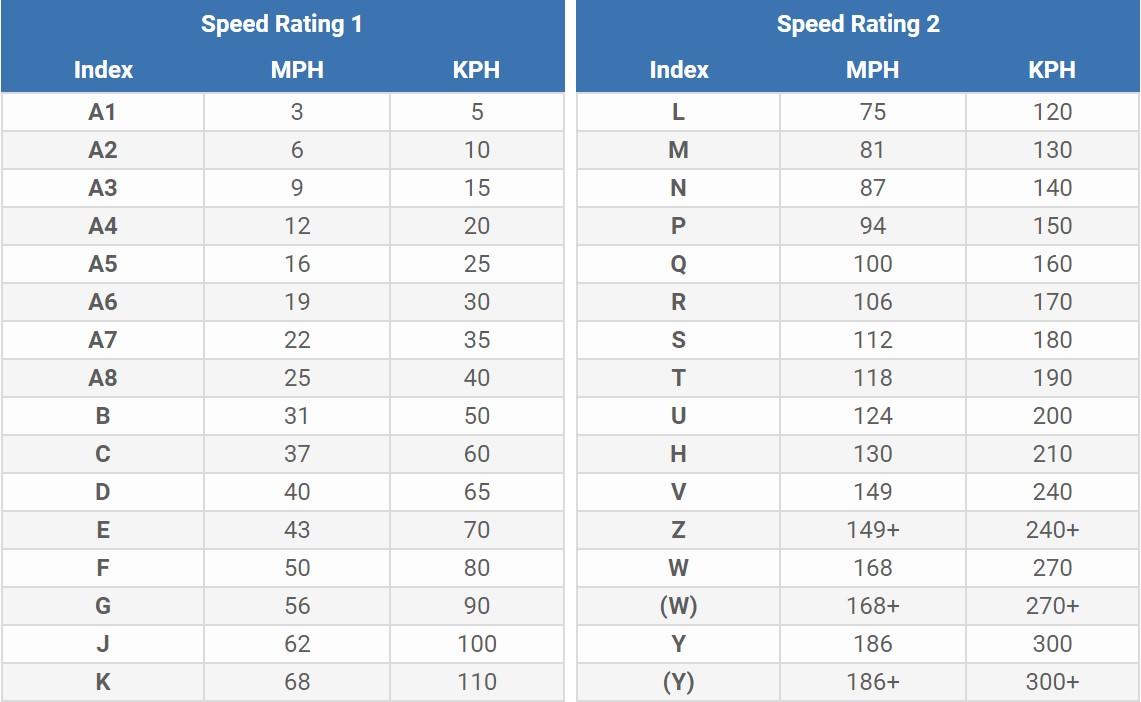
Modern radial motorcycle and scooter tyre sizes are fairly easy to read and understand. A size like 110/70R17 has the tyres width first (110mm), its sidewall profile (70%), its construction (R = Radial) and its tyre rim diameter (17"). You may sometimes get the speed rating letter before the 'R' so it may be common to see 110/70ZR17, where the Z indicates it is rated to speeds of 149+mph.
Crossply or Bias tyres usually follow the same system as above, but instead of the R for Radial they will have a dash (-) to indicate they are of crossply or bias construction, i.e. 110/70-17. It is also common in crossply/bias tyres to have imperial sizes (instead of metric) like 2.25-19, 3.50-10, 4.60-16, where the width is still the first number but is now in Inches instead of mm. The profile is not written in these sizes.
Finally, you can also get tyres marked with alphanumerical. These are often found on older bikes like Harley-Davidsons and Honda Gold Wing models. In a size like MT90B16, the M denotes its for motorcycle use, the T is a width code that translates to 130mm, 90 is the tyre profile (%), B is for Bias Ply, and 16 is the rim diameter in inches. Sometimes the B is replaced by the speed index letter such as MT90H16 being rated to speeds of H (130 MPH). The tyre width codes used as a follows:
| Position | Alpha | Metric |
| FRONT | MH90 | 80/90 |
| FRONT | MJ90 | 90/90 |
| FRONT | MM90 | 100/90 |
| FRONT | MN90 | 110/90 |
| Position | Alpha | Metric |
| FRONT | MR90 | 120/90 |
| FRONT | MT90 | 130/90 |
| REAR | MN90 | 110/90 |
| REAR | MP85 | 120/80 |
| Position | Alpha | Metric |
| REAR | MP85 | 120/90 |
| REAR | MT90 | 130/90 |
| REAR | MU90 | 140/90 |
| REAR | MV85 | 150/80 or150/90 |
Newer tyres that have a width of 150+ mm will only ever use metric sizing. When the alphanumeric system was created, motorcycle tyres didn’t get much bigger than an MV85.
Many of today’s modern motorcyle tyres require operation in one direction only. This is because during manufacturing, the tread is cut to length in a flat strip at an angle and spliced together with the ends overlapping. This creates a hoop that aids the tyres longevity and stability. When a rear tyre is mounted backwards, under acceleration, it will peel back the splice, leading to blowouts. For front wheel tyres, braking will peel back the splice.
In some cases, using a rear tyre for the front is applicable, but you must remember to reverse the rotation. Never use a front application on the rear, and always consult with your manufacturer before reversing positions. Our best recommendation is to use the front on the front and the rear on the rear. There will be an arrow on your tyre noting the direction the tyre must turn.
Finding the correct tyre balance is incredibly helpful, and most tyres feature painted balance dots to make it easier to balance them.
The legal minimum tread depth for a road bike in the UK is 1.6 mm, and for light motorbikes it is 1 mm. In both cases, these are the absolute limits for tyre wear. If the tyre tread depth falls below this limit, your tyres should be considered unsafe and your insurance cover will be affected. We recommend changing your tyres once the tread reaches 2 mm in order to maintain tyre grip and handling, and ensure effective performance on wet surfaces.
You can measure the tread depth in the middle area of the main tread in the wide grooves. The easiest way to do this is by using a 20p coin. If the outer band is not visible, everything is OK. Once it becomes visible, it is time to buy new motorbike tyres. Also, if you love winding roads, pay particular additional attention to the condition of the lateral treads.
It is important to break in new tyres for motorcycles carefully. When freshly fitted your new tyres will still have a smooth surface with little grip. This is particularly noticeable in inclined positions and there is a risk that you will slip away if you ride carelessly. Pay special attention to the manufacturer's specifications concerning the mileage in km that is necessary to break in their tyre according to their past experience. Whether a new motorbike tyres develop it'sr full potential from 50, 100 or 200 km depends on your riding style and the routes chosen during the breaking in phase.


